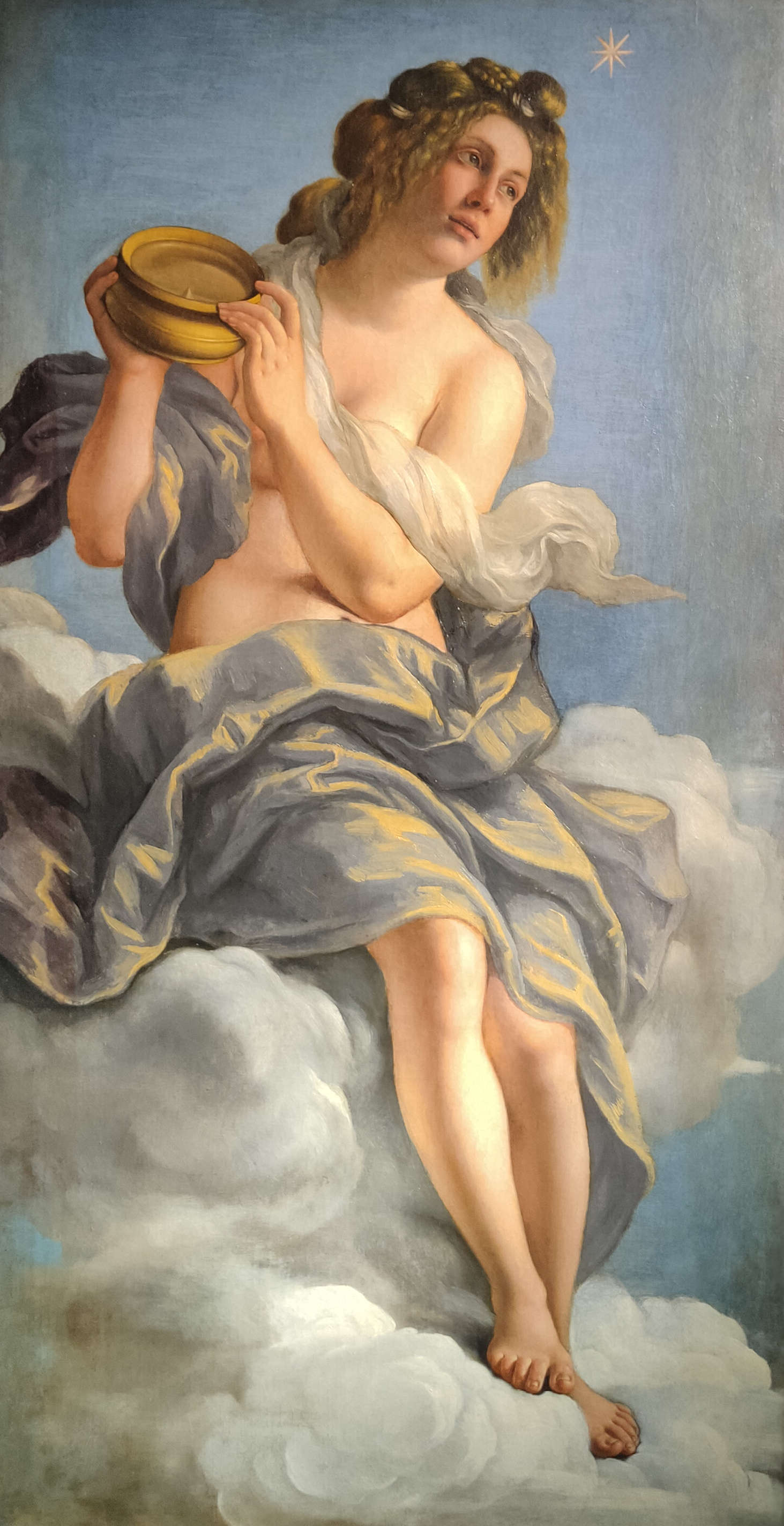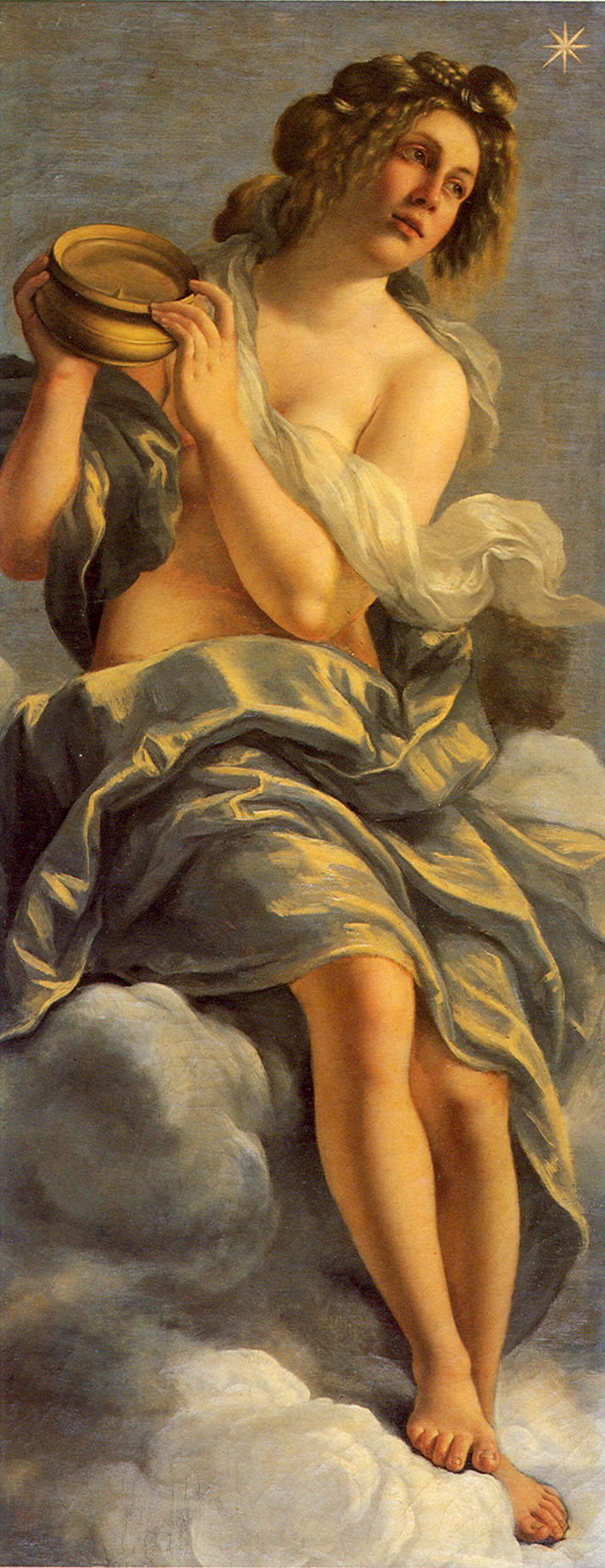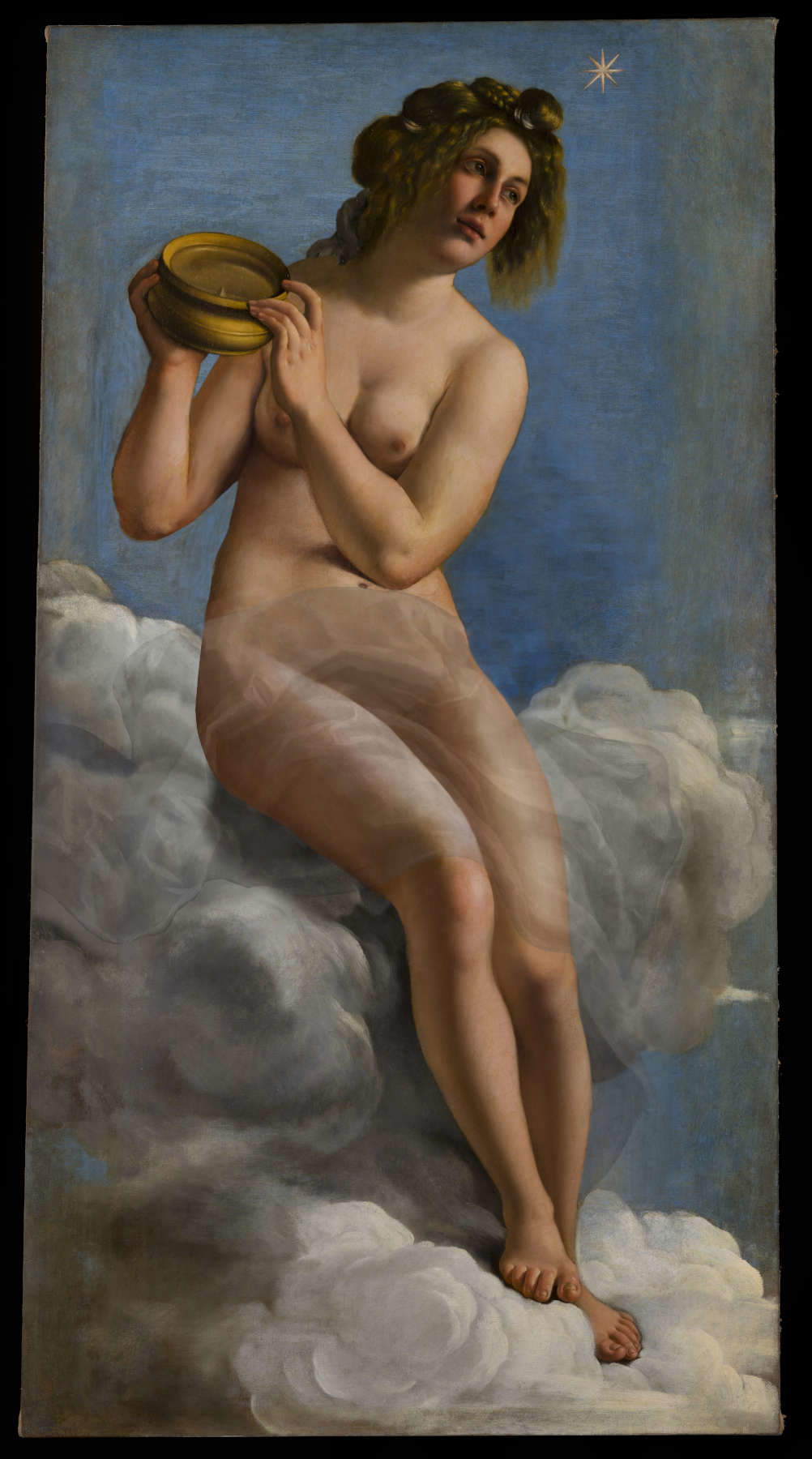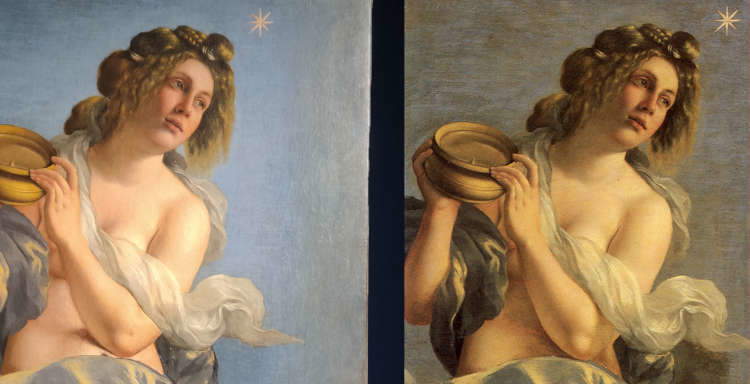Artemisia Gentileschi as she had not been seen for centuries. At Casa Buonarroti, the exhibition Artemisia in Michelangelo’s Museum, on view through Jan. 8, 2023, unveils the results of the intervention on theAllegory of Inclination, the work that Artemisia Gentileschi (Rome, 1593 - Naples, post-1654) executed for this very house, where Michelangelo’s grandson, Michelangelo Buonarroti the Younger, lived in 1616, who commissioned a series of panels depicting the virtues of his great sculptor ancestor from many important artists of the time. Artemisia depicted herself in the guise of the inclination, completely nude: that work, which was considered patently scabrous, was then covered in later times with veils concealing Artemisia’s nudity, painted by an important seventeenth-century Tuscan artist, Baldassarre Franceschini known as the Volterrano. The veils have not been removed from the original painting, which has been restored without alteration from Volterrano’s intervention, but they have been removed with a virtual simulation that shows what lies beneath the repainting: the exhibition thus allows visitors to see the work as it was imagined.
The exhibition, curated by museum director Alessandro Cecchi and designed by Massimo Chimenti of Cultura Nuova, takes place in the three rooms on the ground floor of Casa Buonarroti. The first section places Artemisia in the context of her new city, Florence, where she found herself part of the social and cultural circle of the poet Michelangelo the Younger. Here she would become the first woman painter to be admitted to the Accademia del Disegno, make the acquaintance of Galileo Galilei, and obtain commissions from the upper echelons of Florentine society, including Grand Duke Cosimo II. Especially noteworthy is Artemisia’s Penitent Magdalene, from the Galleria Palatina (Uffizi Galleries), recently restored at the Opificio delle Pietre Dure. The second room presents the recently restoredAllegory of Inclination, Artemisia’s first recorded commissioned work in Florence, and explains how this painting fits into the iconological program conceived by Michelangelo the Younger for the Gallery of Casa Buonarroti, with the aim of representing the Renaissance master’s many extraordinary qualities. The third room of the exhibition features a video documenting the entire restoration process carried out on site at Casa Buonarroti, where visitors were able to see the painting ’up close’ and interact with the restorer.
Why were the veils not removed from the original? The restorer in charge of the intervention, Elizabeth Wicks, explains. "The Artemisia UpClose project was conceived knowing that the draperies of the Volterrano would not be removed for two reasons,“ Wicks explains. ”First, removing the thick layers of oil paint applied by Volterrano less than fifty years after the original was made could have endangered Artemisia’s delicate veils that lie just below the overpainting. Second, the veils were applied by an important late Baroque artist and are now part of the painting’s history. Using diagnostic images, the restoration team was able to trace the original contours of the figure of the Inclination hidden by the added draperies,“ explains the chief restorer. ”Thanks to advanced digital technology adapted for the restoration, it is now possible to see the reconstruction of the Tilt as it was originally painted by Artemisia Gentileschi."
A thorough diagnostic campaign, which combined sophisticated imaging techniques and chemical analysis, supported this restoration and enabled conservators to identify Artemisia’s pigments and painting technique. Restorers learned, for example, that the artist saved her precious lapis lazuli pigment by using very little of it on the parts of the blue sky that would later be covered by the ceiling’s architectural structure. Through investigative work, restorers discovered two later restorations, dating from the 1860s and 1870s. These later overpaintings, as well as dirt and discolored varnishes, have now been removed, revealing more of Artemisia’s original work and its brilliant colors. Before completing the work on the pictorial surface, a complete structural restoration of the painting was carried out. The intervention included the consolidation of the pictorial layers, improving both the surface and canvas distortions, the application of a double series of canvas strips to the perimeter of the original canvas, and the replacement of the colander with an expandable stretcher, which allows the canvas tension to be adjusted.



"That singular Allegory of Incl ination, which, painted in 1616 on a commission from Michelangelo Buonarroti the Younger, symbolically kicked off the celebration in images of the virtues of Michelangelo Buonarroti-the ’divine artist and poet’-on the ceiling of the Gallery in the family home, is at the heart of the exhibition dedicated to Artemisia Gentileschi and her stay in Florence," says Cristina Acidini, president of the Casa Buonarroti Foundation. "The excellent conservation work that preceded the exhibition and the exhibition itself were made possible by the generous support of promoters and funders who were not Italian by birth, but passionate admirers of Italian and Florentine art in particular: Calliope Arts and Christian Levett. In full collaboration with the staff of the Fondazione Casa Buonarroti, the sponsors aimed to enhance not only a masterpiece particularly close to their sensibility, attentive to women’s art, but other significant parts of the museum itinerary of the Casa, a true jewel of the Florentine cultural heritage that deserves to be visited by citizens and tourists alike."
“The exhibition,” the director adds, “combines documentation on the restoration and accompanying diagnostic investigations with new art historical considerations originated by the intervention that we hope will be the first of a long series for the recovery of the paintings of the Buonarrotiana Gallery and the adjoining seventeenth-century rooms.”
"TheInclination, already interesting in itself, was made more fascinating by the censorship of the original nude allegorical figure by order of Leonardo Buonarroti, a descendant of Michelangelo, with the addition of heavy veils to cover the nudity (and thus preserve the modesty of the women of the house),“ explains Wayne McArdle, co-donor and co-founder of Calliope Arts, a nonprofit based in Florence and London that promotes public knowledge and recognition of art, literature and social history from a female perspective. ”The possibility of virtually ’unveiling’ this figure, revealing the image originally painted by Artemisia, turned an ’ordinary’ restoration into a quest to discover the woman behind the veils."
The volume, Artemsia UpClose, in English (The Florentine Press, 2023), which contains essays by world-renowned scholars, will be accompanied by a series of publications in Italian titled “Buonarrotiana” (2023) containing research by specialists on Artemisia and her era. This will be followed by a series of lectures with important guests. “We want to make Artemisia Gentileschi a household name and generate interest in her groundbreaking works of art,” explains co-sponsor Margie MacKinnon. “Her story is so dramatic, her paintings so powerful, and her achievements so impressive that people ask, Why haven’t I heard of her before, and who are the other artists I should know?”
“Throughout history, artists have been not only the gatekeepers but also the creators of culture,” adds the project’s co-sponsor, Christian Levett, a British collector and founder of the Femmes Artistes du Musée de Mougins (Spring 2024) and the Levett Collection house-gallery in Florence, which houses artworks by the leading exponents of Abstract Expressionism. “This was true of Artemisia in her day, when she began to put heroines at the center of her canvases. What is special about Artemisia is that she continues to be a driving force for culture today, and this exhibition and restoration reveal her abilities that complement her iconic personality.”
 |
| Artemisia Gentileschi as never seen before. Restored and Unveiled Tilting |
Warning: the translation into English of the original Italian article was created using automatic tools. We undertake to review all articles, but we do not guarantee the total absence of inaccuracies in the translation due to the program. You can find the original by clicking on the ITA button. If you find any mistake,please contact us.